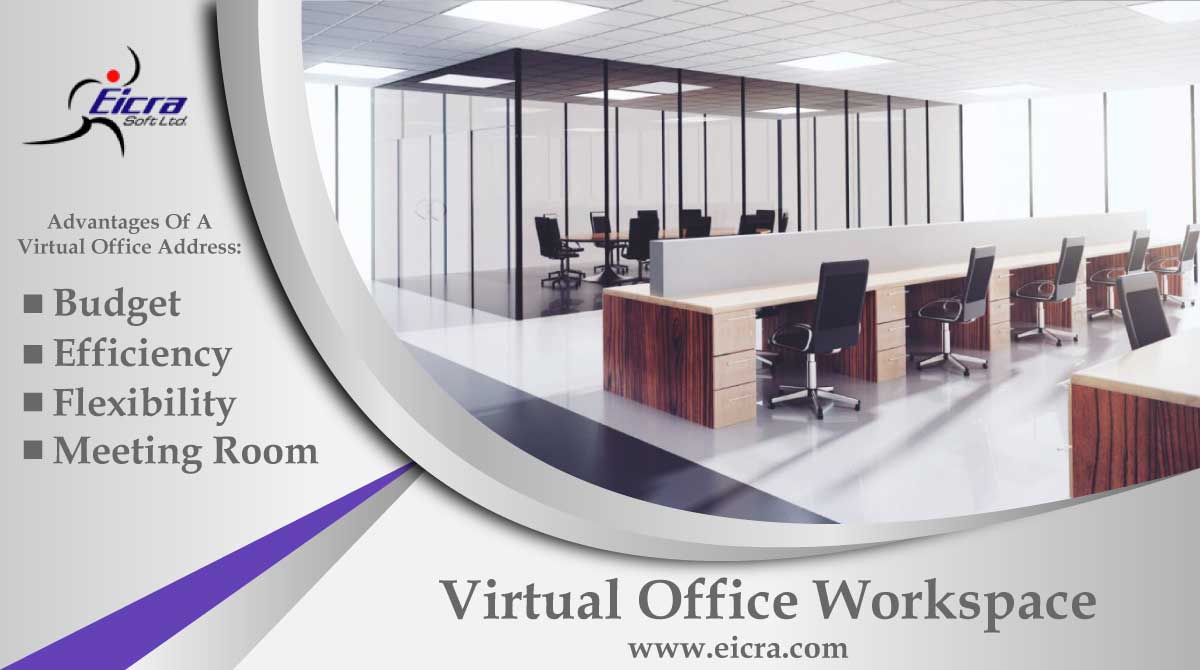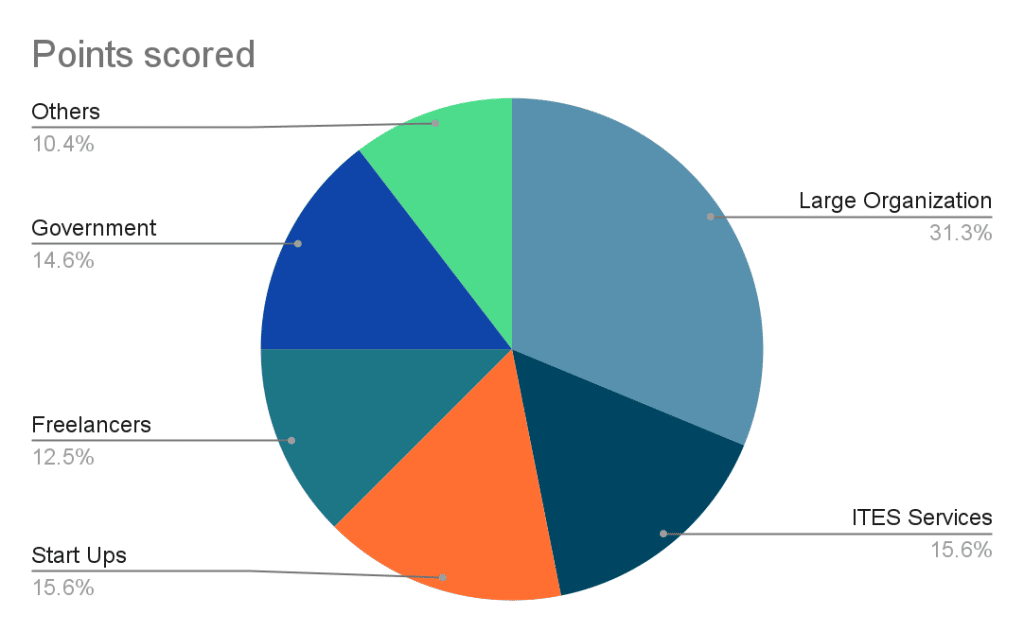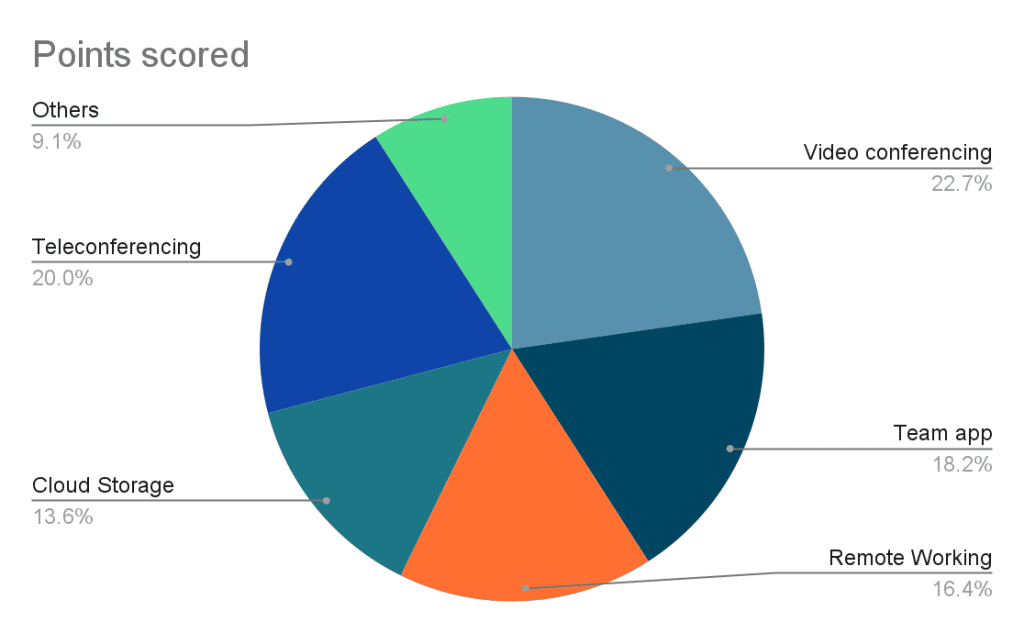
As we reach 2022, the mood has switched from company continuity and pivoting to how to regain business and growth. While in this new normal of quarantine, restricted travel, and working from home, businesses of all sizes and sectors have explored imaginative methods to debut new goods or services throughout the year.
During the epidemic, most people’s remote working has been defined by alt-tabbing between messaging applications and videoconferencing services like Slack, Teams, and Miro. And there’s a lot of space for improvement in that area.
Collaborative work between coworkers decreases when they work remotely, according to academic research. Communication is hampered when email or Slack exchanges increasingly replace real-time in-person discussions.
End- User (%) in 2020
The various sectors as end-user which has followed virtual office space more or less:
1. Large Organizations
2. ITES Service
3. Start Ups
4. Freelancers
5. Government Organization
6. Others

With the unknowns of what 2021 may bring, a virtual office gives you with business alternatives and space, when previously, your options would have required you to engage in a long-term, expensive commercial lease.
Your company will have more possibilities if you choose a virtual office service. You can test a market without incurring high overhead expenses, grow slowly in a new market without adding several personnel, and cancel a virtual office if it doesn’t work out.
You must demonstrate to your existing client base that investing in you is the right decision. People want to buy from companies that address their issues and have a long-term plan for development and stability.
Even little investments from Professional Employee Organization (PEO) in new areas show tenacity and strength, as well as demonstrating to existing clients that you are a reliable partner for their company beyond 2021.
Services user (%) in 2020
The following are some of the numerous service industries that have mostly adopted virtual office space:
1. Teleconferencing
2. Videoconferencing
3. Apps for Teams
4. Remote Access to Work
5. Storage in the Cloud
6. Others

One of the most pressing concerns for small companies operating out of the owner’s home is privacy; virtual office spaces give a real postal address to which all correspondence may be routed before being sent to the owner.
Small company owners don’t want to deal with the effort of handling mail, negotiating a lease, or managing workers, especially if they can avoid it. Virtual office spaces are the ideal choice for most e-commerce and small enterprises who desire the benefits of a regular office without the drawbacks.
One of the key advantages of conventional physical corporate offices is that they foster a company culture in which employees may interact and establish connections with their coworkers.
However, with virtual offices and remote workers, it might be difficult for employees to communicate and socialize. With video conference calls and weekly team meetings, these flaws may be readily overcome. This problem will not affect small enterprises with few or no employees.
The scope of the global virtual office market is as follows:
Report Coverage
Base Year:
Historical Data:
Forecast Period 2021 to 2027 CAGR:
Details
2020
2016 to 2020
16.52%
Forecast Period:
Market Size in 2020:
Market Size in 2027:
One of the indisputable benefits of virtual offices is the flexibility they give to enterprises with changing requirements. For example, a five-person startup may just require a month-to-month postal address, but a bigger, more substantial SME may require mail forwarding and meeting room access on demand.
The majority of virtual office plans include the following features which are making it very demanding:
1. Monthly pricing is typically available, with no long-term commitments.
2. Hundreds of locations throughout the world recognize this mailing address.
3. Coworking and meeting rooms that are fully equipped
4. Services such as mail forwarding, scanning, and emailing are available.
5. Virtual phone services or a live receptionist
6. Add-on services are available as an option.
Businesses and entrepreneurs alike are hoping to recoup from 2020, and most are finding that by employing a virtual office, they can expand into new areas, decrease expenses, and appeal to a wider range of customers. Only one thing is certain in 2022: just as in 2020 and 2021, anticipate the unexpected!
How To Pick The Best PEO
Ask the following questions and consider the following factors to identify the best PEO since it will affect your employees and HR procedures:
1. Accreditations and auditing
2. Their perks they provide
3. References
4. Agreements relating to services
You may relieve a lot of the load on your management by delegating your responsibilities for payroll, capital management, and human resources. Due to the superior perks of PEO you’ll be able to provide, it might help foster an environment where employees are happy.
To Sum Up
We also have extensive knowledge of the added HR, payroll, and risk management issues that come with recruiting remote workers, including how to comply with ePosters required by workplace labor laws and company tax filing requirements. Get in contact with us for our expert employer organization services if you’re seeking for a new HR and benefits solution for your company or if you want to hire remote workers.



Sorry, the comment form is closed at this time.